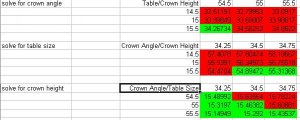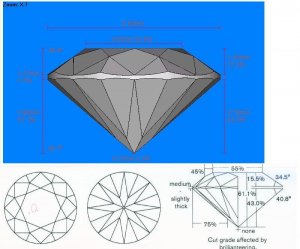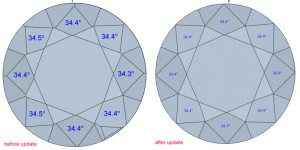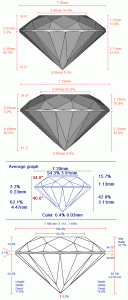adamasgem
Brilliant_Rock
- Joined
- May 23, 2003
- Messages
- 1,338
I just randomly grabbed a NEW GIA (NEW ARITHMETIC), cert from a web site..
CH=15%
Table=55%
CA=34.5%
Mathematics says 33.69 degrees GREAT CONSISTENCY, AND THEY ARE GOING TO PATENT THIS...
BUYERS BEWARE, DON'T TRUST WHAT IS ON THE GIA PAPER...
This is what half assed rounding does to you, what number is correct, if any. NOTE the words "profile is to actual proportions" yah... right......
.

CH=15%
Table=55%
CA=34.5%
Mathematics says 33.69 degrees GREAT CONSISTENCY, AND THEY ARE GOING TO PATENT THIS...
BUYERS BEWARE, DON'T TRUST WHAT IS ON THE GIA PAPER...
This is what half assed rounding does to you, what number is correct, if any. NOTE the words "profile is to actual proportions" yah... right......
.


















300x240.png)